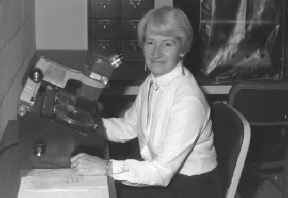
Shoemaker’s achievements went far beyond this discovery. Between 1980 and 1994, as a member of the Palomar Asteroid and Comet Survey (PACS), she found 32 comets, plus more than 400 asteroids. Although PACS’s objective was to find asteroids or comets that could pose a threat to civilization, the discovery of Shoemaker–Levy 9 completely overshadowed that aim. The interest generated by the comet’s impacts with Jupiter was almost as spectacular as the collisions themselves. For the first time, people the world over grappled with questions about what transpires when comets strike planets, and how these impacts might offer an insight into the origins of life on Earth.
Each observation began by loading a 15-centimetre disc of film into a plateholder, mounting it into the telescope, and exposing the film for 8 minutes. It would then be placed in a light-tight box, and a new film inserted. Our nights would be divided into sets of four, sometimes five, fields; we then repeated each exposure. At our most efficient, the time between the end of one exposure and the start of the next was as little as 90 seconds. Our nights would be divided into observations of four, sometimes five, fields of the sky; we then repeated each exposure. It was during one of these routine sessions that we recorded the two ‘discovery’ images of Shoemaker–Levy 9. When Brian G. Marsden at the Harvard-Smithsonian Center for Astrophysics calculated that the comet was on a collision course with Jupiter, Gene thought: “In my lifetime, I am going to witness a cosmic impact.” Carolyn thought: “I am going to lose one of my comets.”
One consequence of these observations is that, since 1994, cosmic impacts have been taken seriously, and more programmes around the world are looking for comets and asteroids that could pose a threat to Earth. Other lines of research are pursuing the idea that life on Earth might have been seeded by simple organic molecules arriving from space on comets. And, parenthetically, the ‘giggle factor’ — the offhand reaction of journalists and laypeople to the idea of objects from space hitting Earth — has dissipated completely.
After the impacts, Carolyn resumed her search with PACS, along with her husband and me. Although the programme concluded at the end of December 1994, the team continued the work with two smaller Schmidt cameras at the Jarnac Observatory in Arizona. Gene was killed in a car accident in Australia in 1997. Carolyn bravely continued her work after that.
Credit : Nature
Picture Credit : Google




